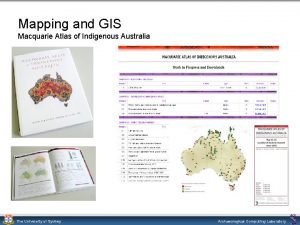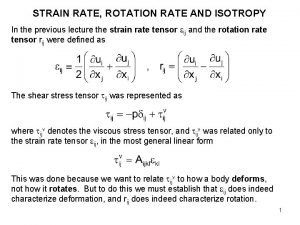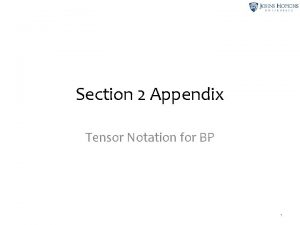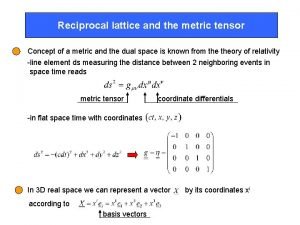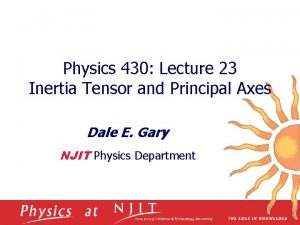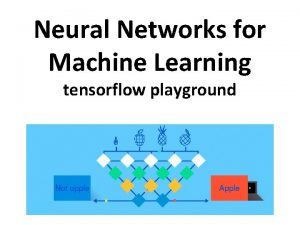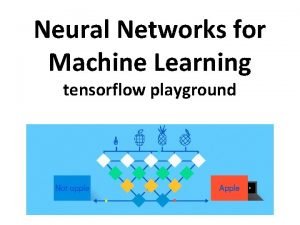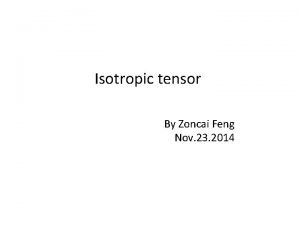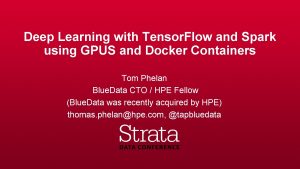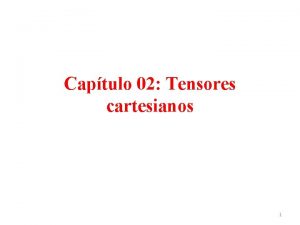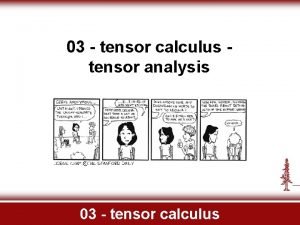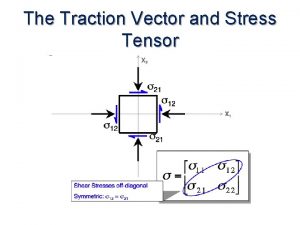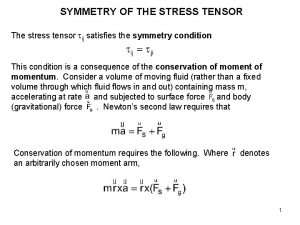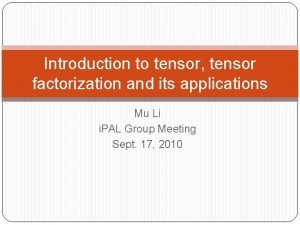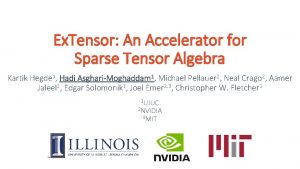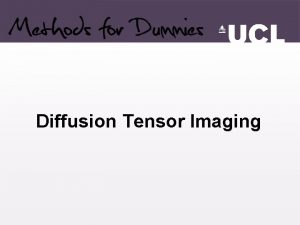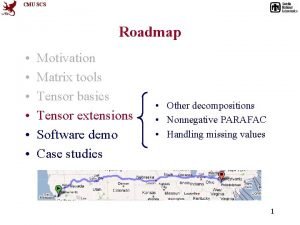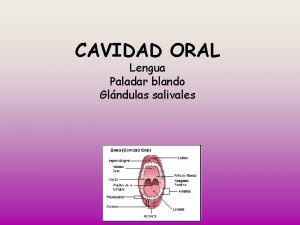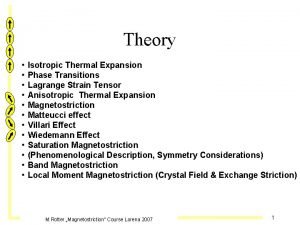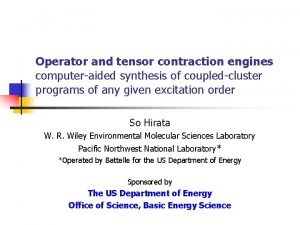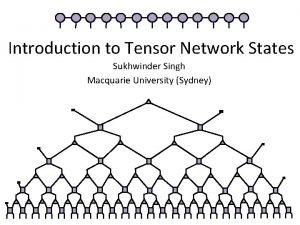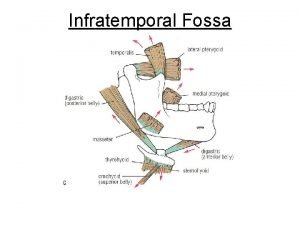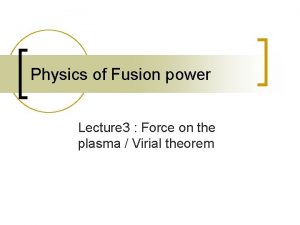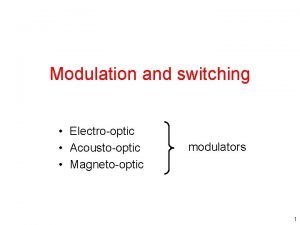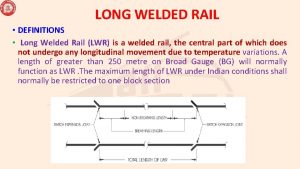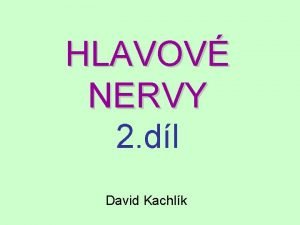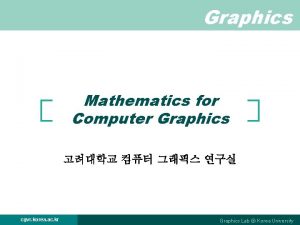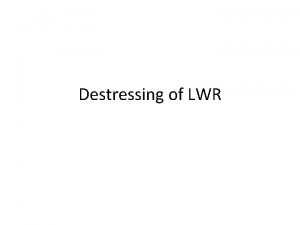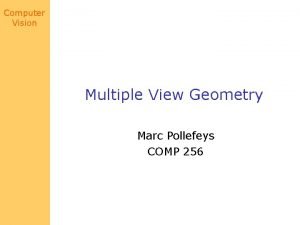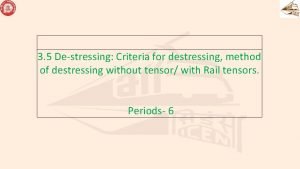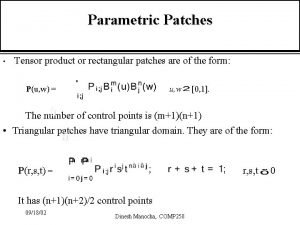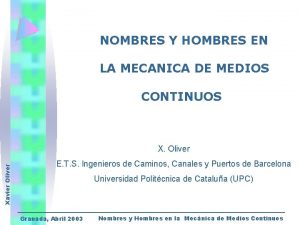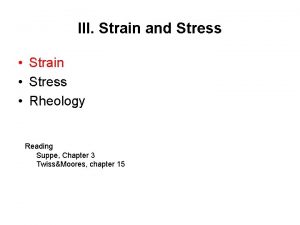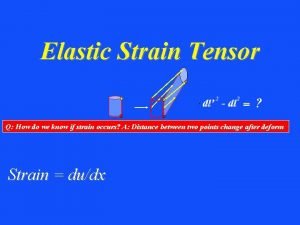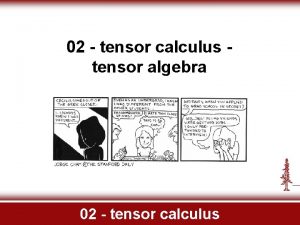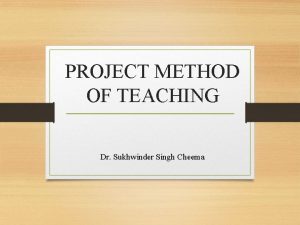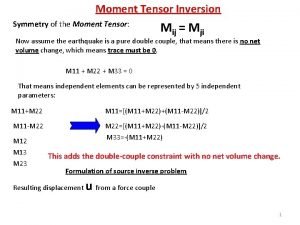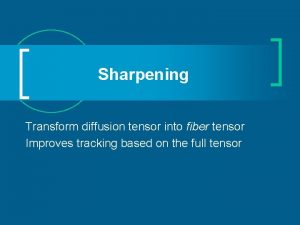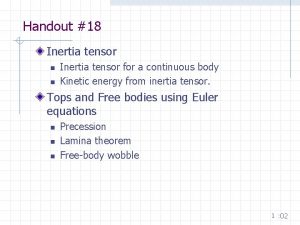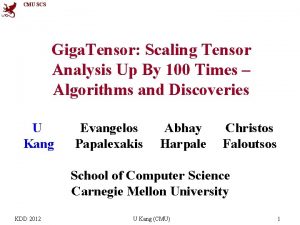Introduction to Tensor Network States Sukhwinder Singh Macquarie


























































- Slides: 58

Introduction to Tensor Network States Sukhwinder Singh Macquarie University (Sydney)

Contents • The quantum many body problem. • Diagrammatic Notation • What is a tensor network? • Example 1 : MPS • Example 2 : MERA

Quantum many body system in 1 -D


How many qubits can we represent with 1 GB of memory? Here, D = 2. To add one more qubit double the memory.

But usually, we are not interested in arbitrary states in the Hilbert space. Typical problem : To find the ground state of a local Hamiltonian H,

Ground states of local Hamiltonians are special

Properties of ground states in 1 -D 1) Gapped Hamiltonian 2) Critical Hamiltonian

We can exploit these properties to represent ground states more efficiently using tensor networks.

Ground states of local Hamiltonians

Contents • The quantum many body problem. • Diagrammatic Notation • What is a tensor network? • Example 1 : MPS • Example 2 : MERA

Tensors Multidimensional array of complex numbers

Contraction =

Contraction =

Contraction =

Trace = =

Tensor product

Decomposition = = =

Decomposing tensors can be useful = Rank(M) = Number of components in M = Number of components in P and Q =

Contents • The quantum many body problem. • Diagrammatic Notation • What is a tensor network? • Example 1 : MPS • Example 2 : MERA

Many-body state as a tensor

Expectation values

Correlators

Reduced density operators

Tensor network decomposition of a state

Essential features of a tensor network 1) Can efficiently store the TN in memory Total number of components = O(poly(N)) 2) Can efficiently extract expectation values of local observables from TN Computational cost = O(poly(N))

Number of tensors in TN = O(poly(N)) is independent of N

Contents • The quantum many body problem. • Diagrammatic Notation • What is a tensor network? • Example 1 : MPS • Example 2 : MERA

Matrix Product States


Recall!

Expectation values

Expectation values

Expectation values

Expectation values

Expectation values

But is the MPS good for representing ground states?

But is the MPS good for representing ground states? Claim: Yes! Naturally suited for gapped systems.

Recall! 1) Gapped Hamiltonian 2) Critical Hamiltonian

In any MPS Correlations decay exponentially Entropy saturates to a constant

Recall!

Correlations in a MPS

Correlations in a MPS

Correlations in a MPS

Correlations in a MPS

Correlations in a MPS

Correlations in a MPS

Entanglement entropy in a MPS

Entanglement entropy in a MPS

Entanglement entropy in a MPS

Entanglement entropy in a MPS

Entanglement entropy in a MPS

Entanglement entropy in a MPS

MPS as an ansatz for ground states 1. Variational optimization by minimizing energy 2. Imaginary time evolution

Contents • The quantum many body problem. • Diagrammatic Notation • What is a tensor network? • Example 1 : MPS • Example 2 : MERA


Summary • The quantum many body problem. • Diagrammatic Notation • What is a tensor network? • Example 1 : MPS • Example 2 : MERA

Thanks !
 Delinking of degrees from jobs npe 1986
Delinking of degrees from jobs npe 1986 Raj birk
Raj birk Macnet macquarie
Macnet macquarie Tensor network
Tensor network Neural tensor network
Neural tensor network Slave states free states
Slave states free states Southern vs northern states
Southern vs northern states Checks and balances dbq
Checks and balances dbq Tensor naprężeń
Tensor naprężeń Rate of strain tensor
Rate of strain tensor Tensor notation
Tensor notation Tensional
Tensional Reciprocal metric tensor
Reciprocal metric tensor Tensor vaginae femoris
Tensor vaginae femoris Inertia tensor of cone
Inertia tensor of cone Deep learning playground
Deep learning playground Playground tensor
Playground tensor Gluteo medio funcion
Gluteo medio funcion Isotropic tensor example
Isotropic tensor example Ear diagram
Ear diagram What is tensor in machine learning
What is tensor in machine learning Tensor de reynolds
Tensor de reynolds Produto externo de vetores
Produto externo de vetores Vector vs tensor
Vector vs tensor Traction vector on a plane
Traction vector on a plane The symmetry of stress tensor at a point
The symmetry of stress tensor at a point Tensor factorization
Tensor factorization Extensor: an accelerator for sparse tensor algebra
Extensor: an accelerator for sparse tensor algebra Tensor
Tensor Tensor basics
Tensor basics Paladar duro y blando
Paladar duro y blando Atl model
Atl model Músculo tensor da fáscia lata
Músculo tensor da fáscia lata Thermal expansion tensor
Thermal expansion tensor Tensor contraction engine
Tensor contraction engine Tuber ishiadicum
Tuber ishiadicum Tensor product
Tensor product Infratemporal fossa lateral view
Infratemporal fossa lateral view Tensor fasciae latae muscle
Tensor fasciae latae muscle Supraspinatus taping
Supraspinatus taping Tensor tympani
Tensor tympani Uncinate process nose
Uncinate process nose Regio glutea
Regio glutea Tensor notation
Tensor notation Impermeability tensor
Impermeability tensor Destressing of rail temperature
Destressing of rail temperature M tensor tympani innervation
M tensor tympani innervation Cartesian components
Cartesian components Lwr manual
Lwr manual Tensor notation
Tensor notation Destressing of rail temperature
Destressing of rail temperature Incisura terminalis importance
Incisura terminalis importance Notch of rivinus
Notch of rivinus Tensor meaning in physics
Tensor meaning in physics Nombres
Nombres Lig iliopectineus
Lig iliopectineus Strain tensor
Strain tensor Tensor core
Tensor core Strain tensor
Strain tensor


